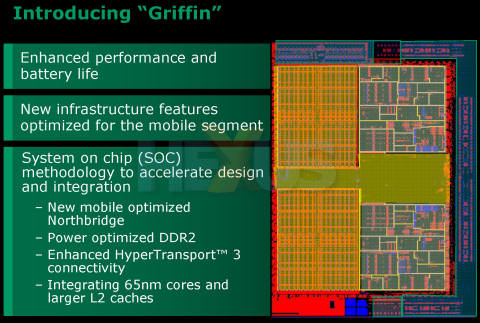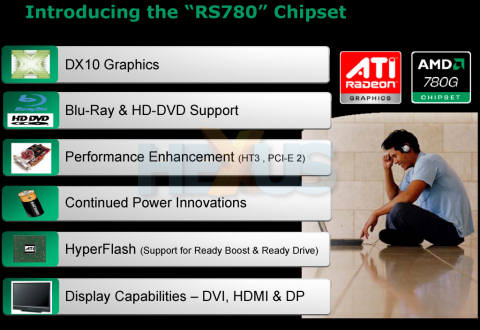More for less
AMD's mobile CPU and chip customers are looking for reduced complexity, smaller form-factors, longer battery life, increased ruggedness and durability and better connectivity. And, Mr Steinman says, these are allied with the desire for a simpler user interface and more intuitive interaction - we presume those being the long-term, if not immediate, expectations for Windows Vista.
More and more laptop owners use their machines instead of desktop PC and want and expect the functionality, in most areas, to be just as good. They're carrying out ever more intensive graphics operations (and that will only increase under Vista) and also want to able to watch movies on the move, without batteries running flat during long flights.
Their portable computers have to be able to connect with a wide range of external storage devices and need to be able to handle forthcoming 802.11n wireless networking. At the high-end, they'll expect to be able to run not just one external monitor but two or three.
And, according to Mr Steinman, AMD has answers for today - the company's 690-Series chipset having received "unprecedented" support from its trade partners - and even better answers for the future. Those, he says, will come courtesy of the Griffin and Puma.
Griffin is the codename for the company's next-generation mobile CPU, featuring an on-die northbridge designed from the ground up for mobile use and promised for volume production at the end of the year.
The functionality of different elements of Griffin's northbridge, such as memory bandwidth, are tailored to match the demands of laptop PCs, rather than being suitable for use right up to the server level. Consequently, their implementation is more appropriate to laptops and far less power-hungry than a one-size-fits-all design would be.
Puma is the code-name encompassing the CPU and motherboard chipset scheduled for the middle of next year when AMD will be squaring up in competition with Intel's Centrino CPU-and-chipset offering.
As you can see from the slide below, Puma will initially consist of a CPU and two chips. By 2009, though, AMD should have moved far closer to integrating all three elements into a single chip.
Puma's SB700 southbridge handles data in/out, including high-def audio and NAND Flash (HyperFlash) for use accelerating Windows Vista. (Turbo Memory or Readyboost, anyone?) The other chip, RS780M, handles graphics and video and is derived from the newly introduced R600 desktop GPU.
The RS780M supports DX10, of course, along with the two competing hi-def DVD platforms, Blu-ray Disc and HD DVD. It also integrates PCI Express 2.0.
As with the already-available NVIDIA GeForce 8M, the forthcoming RS780M is said to off-load the work of hi-def playback from the CPU - though whether it completely relieves the CPU of this burden hasn't yet been confirmed to us.
Puma and Griffin also promise lots of other clever stuff, as you'll discover over on page three...












